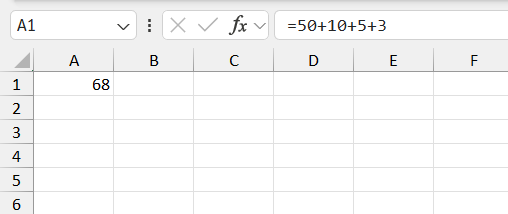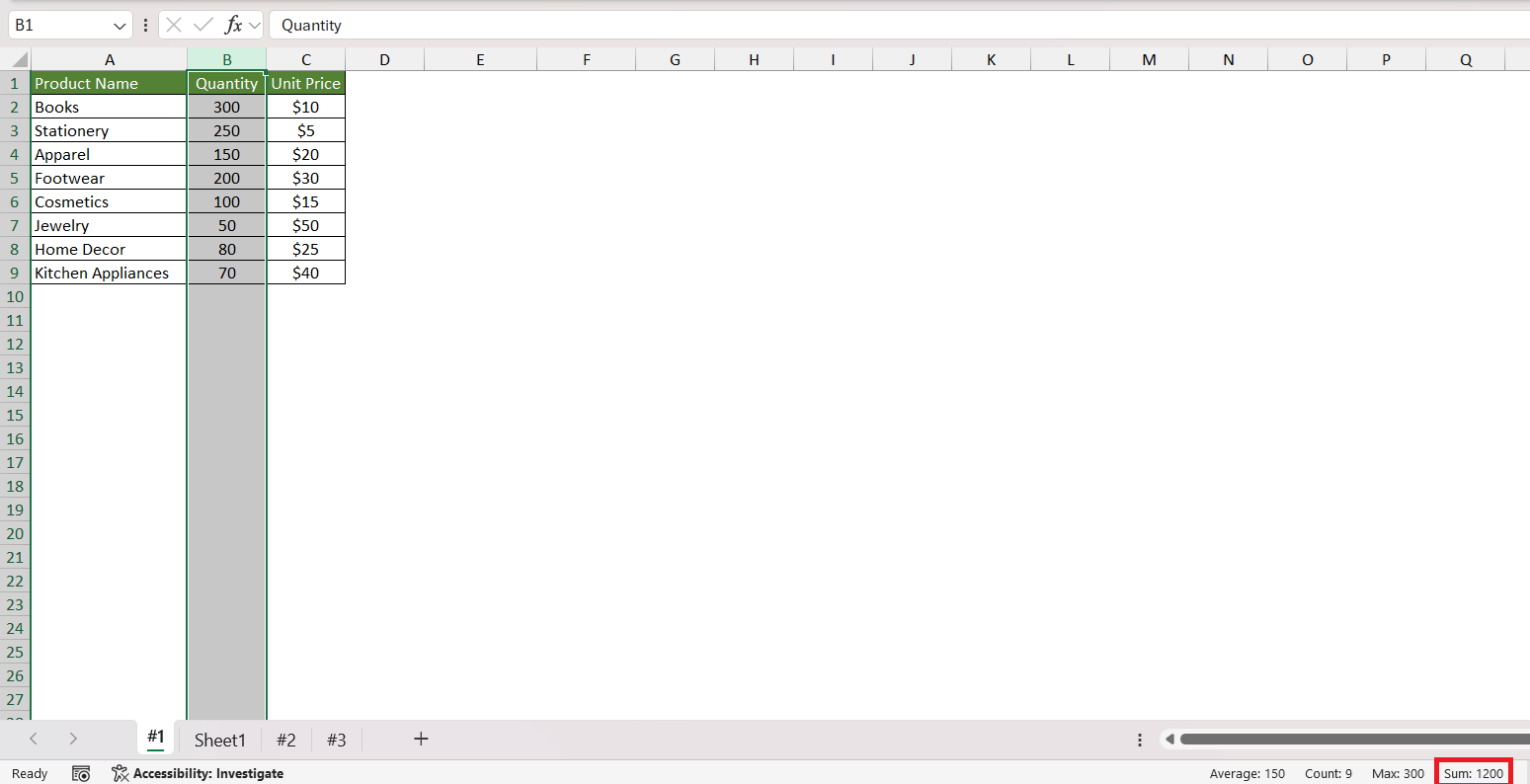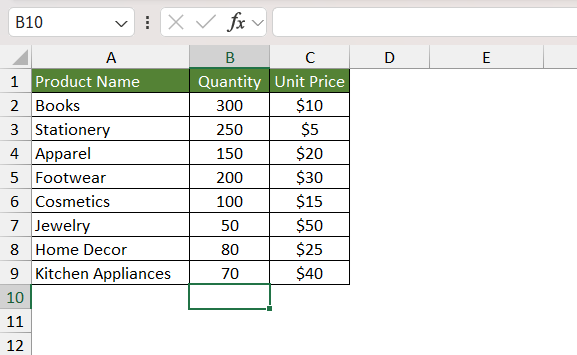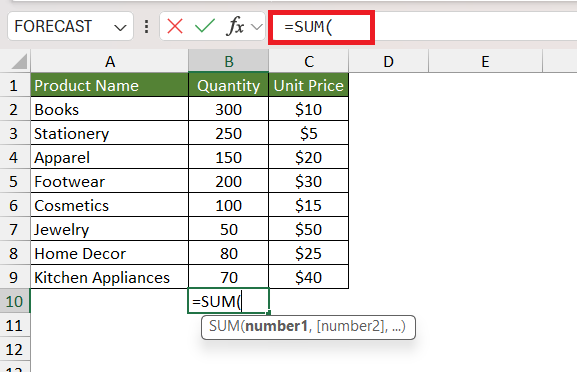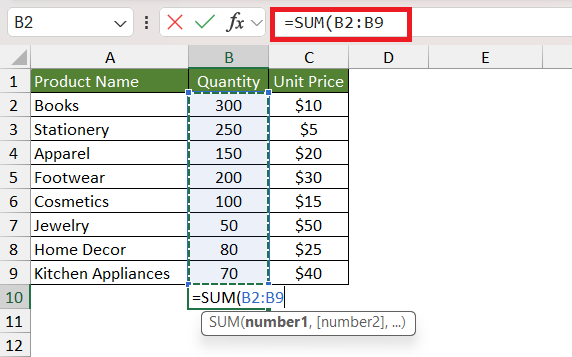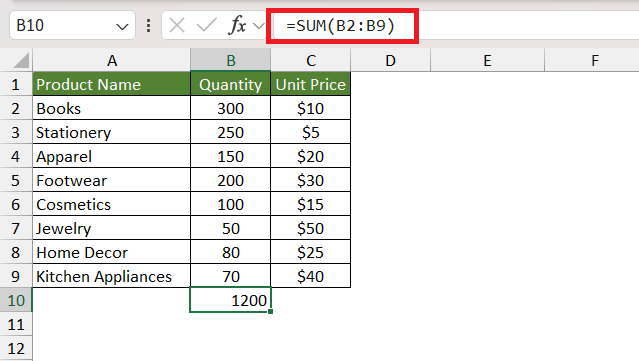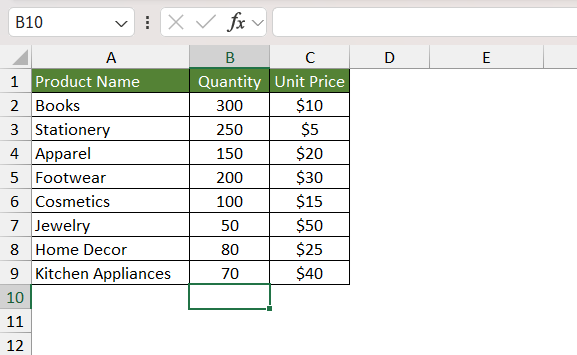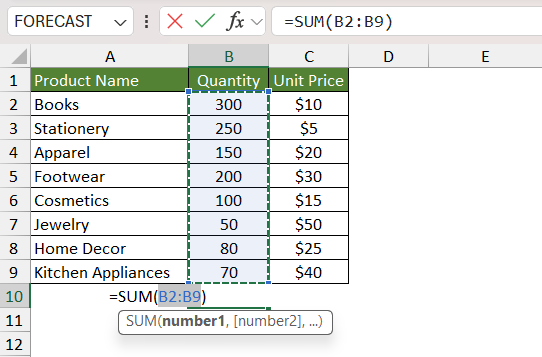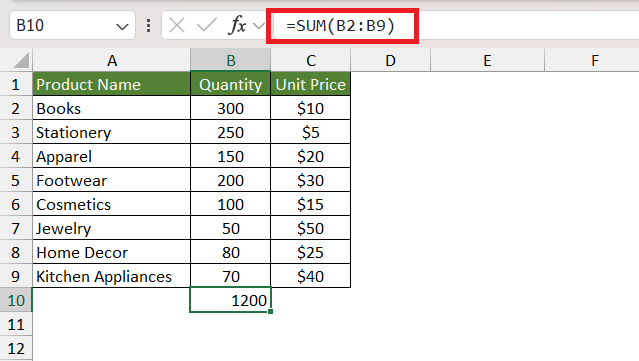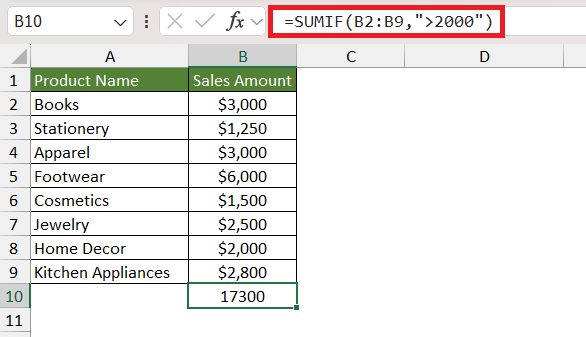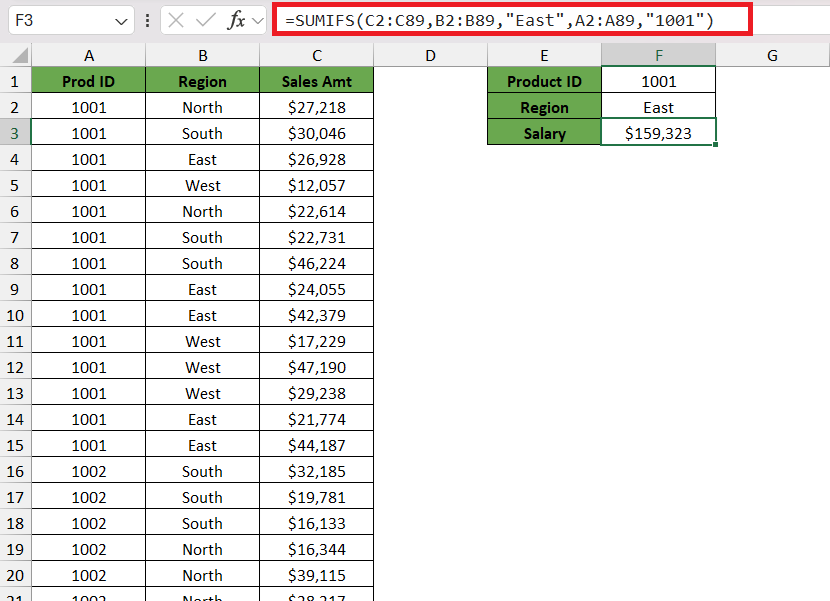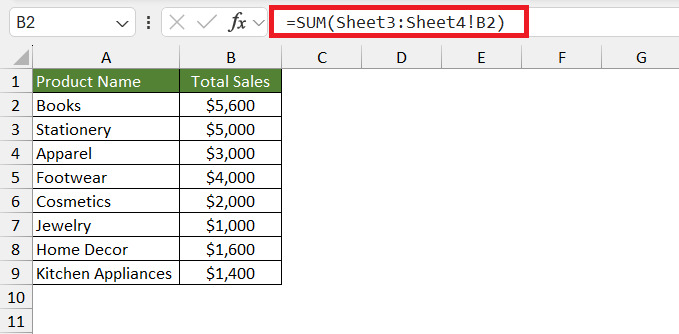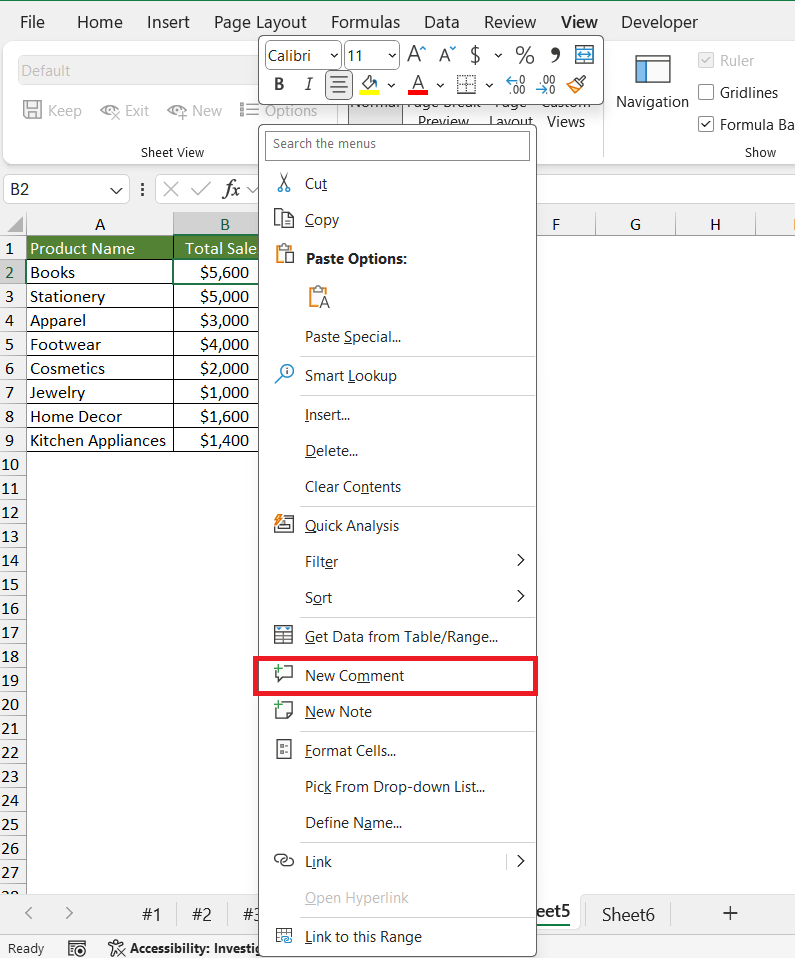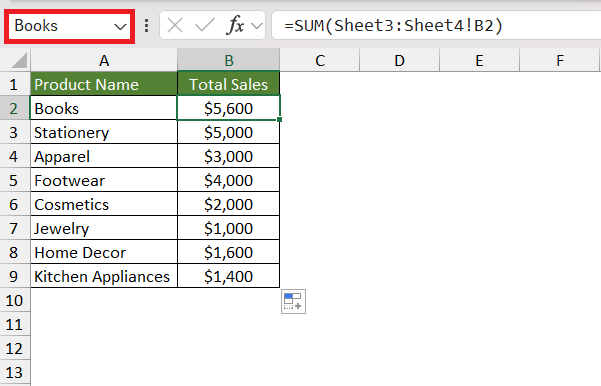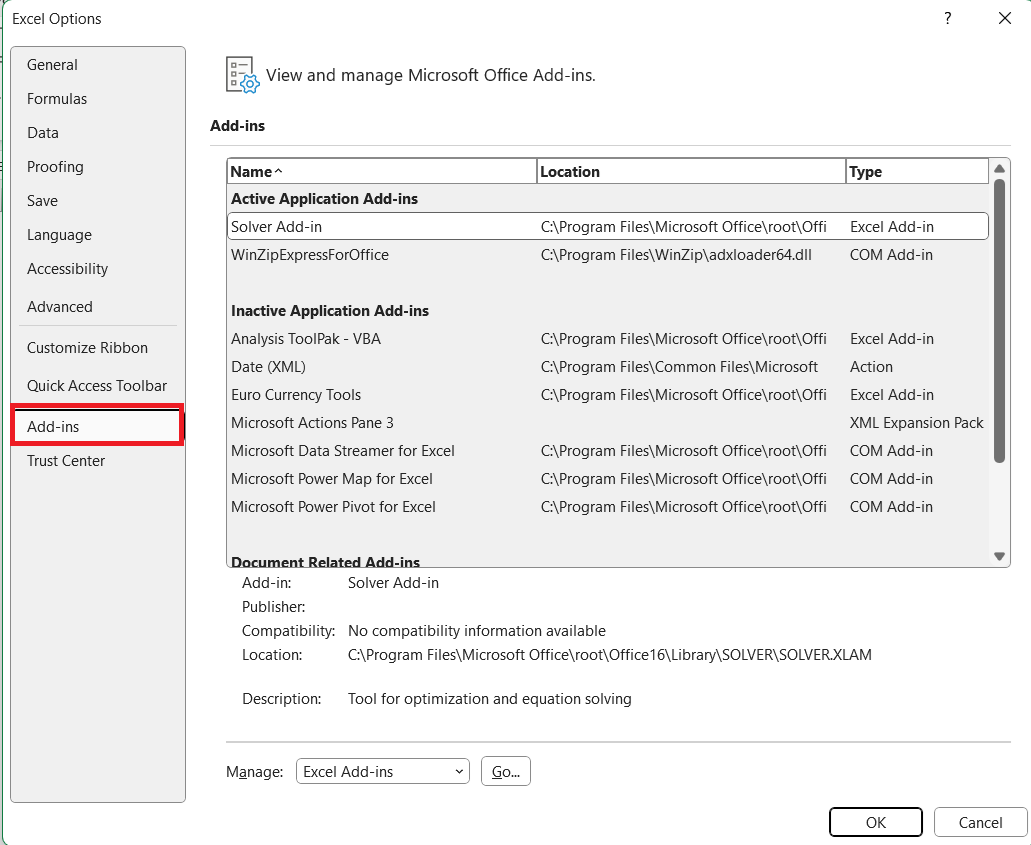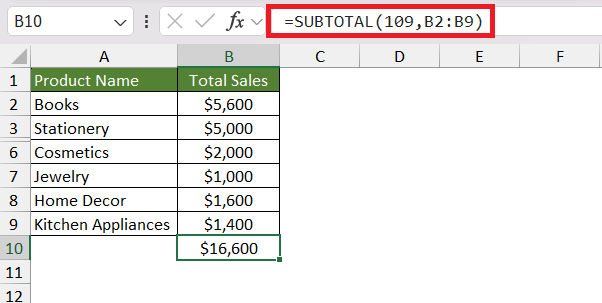

Microsoft Excel is a versatile spreadsheet application that enables users to calculate and manage data efficiently. One of its fundamental features is the ability to add numbers in Excel using various methods, such as direct input within cells or utilizing powerful functions and formulas. Whether you are compiling monthly expenses or tallying sales figures, Excel provides a straightforward approach to achieve accurate addition results.
Table of Contents
Key Takeaways
- Utilize the SUM function to aggregate values from various cells or ranges efficiently.
- Implement the AUTOSUM feature to automatically calculate the total of rows and columns.
- Apply basic addition by using the plus sign (+) to write simple formulas like “=4+5”.
- Speed up data entry and minimize errors by employing keyboard shortcuts such as “Ctrl” + “;” for the current date and “Ctrl” + “:” for the current time.
Download the Excel Workbook and follow along on how to add numbers in Excel – download excel workbookAdd-Numbers-in-Excel.xlsx
Simplifying Sums in Excel
Why Mastery of Addition is Key in Excel
Adding numbers in Excel is a fundamental skill that unlocks the potential of the program’s data analysis capabilities. Whether you’re compiling sales reports, budgeting, or conducting scientific research, being proficient in basic arithmetic operations ensures accuracy and provides a solid foundation for more advanced tasks. Let’s explore why becoming adept at adding numbers is indispensable for any Excel user.
The Fundamental Ways to Add Numbers in Excel
There are multiple paths to achieve a simple sum in Excel, each suitable for different needs. You can add numbers within a single cell, across a range of cells, or even sum numbers conditionally based on specific criteria. Familiarizing yourself with these fundamental techniques forms the cornerstone of effective Excel data management.
- By Typing in a Cell: You can type a basic math equation directly into a cell to obtain a quick sum.
- SUM Function: This function is a workhorse for Excel users, ideal for adding rows or columns of numbers.
- AutoSum Feature: With just a few clicks, AutoSum automatically identifies the range you’re working with and applies the SUM function.
Whether you’re a novice or a seasoned pro, mastering these essential methods will enhance your Excel proficiency.
Direct Methods for Quick Addition
Typing Numbers Directly Within a Single Cell
When needing a fast result without the frills, typing numbers directly into a cell is your go-to method. Just click any cell, type an equal sign (=), followed by numbers separated by a plus sign (+), like 50+10+5+3. Press RETURN, and Excel calculates the sum for you. While rudimentary, this method is perfect for quick calculations without setting up a formal formula structure.
Remember:
- Suitable for on-the-spot, simple calculations.
- Changes to the sum require you to edit the cell manually.
Utilizing the Status Bar for Instant Results
For an instantaneous sum without creating a formula, Excel’s Status Bar provides a convenient shortcut. Just click on the letter of the column you want to sum, and glance at the Status Bar. There you’ll find a total of the selected cells displayed next to “Sum=”.
Some points to note:
- This method is extremely fast.
- The sum can’t be copied and only shows while the cells remain selected.
It’s a swift option for those times when you just need a quick total instead of painstakingly entering each number elsewhere.
Excel Functions for Efficient Calculations
Adding Multiple Cells Using the SUM Function
To add numbers in excel from multiple cells quickly and efficiently, the SUM function is Excel’s main attraction. They can follow these easy steps:
STEP 1: Select the cell where they want the total.
STEP 2: Type =SUM( to start the function.
STEP 3: Click on the first cell or drag across the range, for instance, B2:B9.
STEP 4: Once all desired cells are selected, close the parentheses with ) and hit Enter.
Excel will sum the values in all specified cells, saving time and reducing the risk of manual errors. If adding non-adjacent cells, insert a comma after the first range, and select another, like C2:C9.
- Ideal for summarizing large data sets or columns.
- Ensures that changes in any of the included cells will be automatically updated in the total.
Streamlining Your Workflow with AutoSum
AutoSum is a beloved Excel feature that makes addition a breeze, especially when working with extensive data. They can employ it by following these steps:
STEP 1: Click the cell where they wish the sum to appear.
STEP 2: Select “AutoSum” (Σ symbol) on the Home tab.
STEP 3: Excel highlights the cells it predicts you want to add. If it’s not correct, they can adjust the selection manually.
STEP 4: Press “Enter”, and voilà, the total sum is computed.
Benefits include:
- Efficiency: AutoSum can determine the range, saving you valuable time.
- Versatility: Beyond summing, select average, minimum, maximum, and more from the AutoSum dropdown.
Drawbacks could be:
- Accuracy: Sometimes, the automatic selection may not include all intended cells.
- Learning Curve: New users must learn how to adjust the range correctly.
Who would love AutoSum? Beginners seeking quick results and experts needing fast sums for extensive data.
Take advantage of AutoSum to streamline repetitive addition tasks, making your workflow more efficient and less prone to error.
Smart Techniques for Complex Totals
Custom Totals with SUMIF and SUMIFS Functions
Excel offers powerful SUMIF and SUMIFS functions for situations where they need to calculate sums based on specific criteria.
SUMIF allows one condition, such as summing sales figures for a particular product. The usage goes like this:
=SUMIF(range, criteria, [sum_range])
For example, to add all sales greater than $2000 in column B:
=SUMIF(B2:B9,">2000")
SUMIFS is the multitasker’s best friend, allowing for multiple conditions. Perhaps they want to sum the sales of sales in a certain region and certain product. They can use:
=SUMIFS(sum_range, criteria_range1, criteria1, [criteria_range2, criteria2], ...)
For instance:
=SUMIFS(C2:C89,B2:B89,"East", A2:A89,"1001")
Features:
- Targeted Data Analysis: Quickly sum data that meets specific conditions.
- Flexibility: Multiple criteria can be applied for refined totals.
Benefits:
- Accuracy: Ensures sums are based on the correct subset of data.
- Efficiency: Saves time compared to manually filtering and adding numbers.
Limitations might include:
- Complexity: Might take time to grasp for those new to using Excel functions.
- Criteria Specificity: Users must define precise criteria, which could be prone to error if not carefully set up.
Best for:
- Analysts who need to process conditional sums frequently and efficiently.
With these functions, you’ll be able to sift through large datasets with pinpoint accuracy, summing only the numbers that meet your targeted criteria.
Dynamic Ranges – The Power of 3D References
When handling multiple sheets, Excel’s 3D references shine by enabling dynamic range calculations. Say they have the same layout across several tabs for different months or departments; they can sum across these identical ranges effortlessly.
Here’s how to use 3D References in a sum:
=SUM(Sheet3:Sheet4!B2) would total the value in cell B2 from Sheet3 through Sheet4.
The Perks:
- Time-Saving: There’s no need to sum each sheet individually.
- Simplicity: It’s an elegant solution when consolidating data from similarly structured sheets.
The Caveats:
- Structure Dependence: All referenced sheets must have the same data arrangement.
- Invisibility: Errors can sneak in as it’s not easy to visualize all the included data at once.
Most Suited For: Users who manage recurrent data patterns across various sheets and want to streamline their summarizing process.
Embrace the power of 3D References to manage comprehensive datasets spread over multiple sheets with confidence and ease.
Best Practices and Helpful Tips
Shortcuts and Tricks for Speedy Data Entry
Mastering keyboard shortcuts can significantly accelerate their efficiency in Excel. Apart from the usual copy (Ctrl + C) and paste (Ctrl + V), here are some handy tricks:
- Enter current date:
Ctrl + ; - Insert current time:
Ctrl + : - Activate AutoSum:
Alt + = - Fill down from the cells above:
Ctrl + D
These shortcuts empower them to fill data at lightning speed and maintain a swift workflow. Embrace these time-savers to reduce mundane tasks and focus more on analytical work.
Use these data entry shortcuts to cut down on clicks and keystrokes, ensuring that they spend more time analyzing and less time inputting.
Maintenance of Clean and Comprehensible Formulas
Keeping Excel formulas tidy and understandable is crucial for the accuracy and longevity of their spreadsheets. Here are some guidelines to help them maintain sparkling clarity in their formulas:
- Consistency is Key: Apply the same formula structure throughout the worksheet for uniformity.
- Comment Your Formulas: Use Excel’s ‘New Comment’ feature to explain complex formulas for future reference.
- Be Descriptive: Name your ranges; this turns obscure cell references into readable terms.
- Avoid Hard-Coding: Where possible, use references instead of directly typing in numbers. This makes updates easier and minimizes errors.
By following these practices, they not only make their spreadsheets more user-friendly but also reduce the scope for confusion during subsequent reviews or handovers.
A neat and transparent formula strategy transforms your spreadsheet into a reliable and shareable resource—one that speaks clearly to anyone who uses it.
Expanding Your Excel Toolkit
Additional Resources for Advanced Excel Users
For those ready to delve deeper into Excel’s vast potential, myriad resources await to elevate their skills:
- Advanced Formulas and References Video: Hone how to manipulate arrays and optimize calculations with precision.
- Excel Functions (by Category): Deep dive into the swathes of functions tailored for specific analytical needs.
- Excel Keyboard Shortcuts and Function Keys: Expedite workflow with time-saving keystrokes.
Embrace the journey of advanced Excel mastery with these resources, and watch their productivity multiply.
Expanding their toolkit with these resources doesn’t just improve efficiency; it also opens up a new world of data analysis possibilities.
Beyond Basic Addition – Exploring Add-Ins and Automation Options
Stepping beyond fundamental addition, they have a wide array of add-ins and automation tools at their fingertips. Excel add-ins like Solver and Analysis ToolPak amplify functionalities, while custom add-ins offer tailored solutions.
Key Types of Add-Ins:
- Excel and COM Add-Ins: Standard and custom tools, including automation add-ins.
- Downloadable Add-Ins: Found on Office.com for additional features.
- Macros and VBA Scripts: To automate repetitive tasks and complex calculations.
Top 5 Features:
- Increased productivity with automation.
- Customizable to specific analytic needs.
- Extended data processing capabilities.
- Time-saving with complex tasks.
- Advanced statistical and mathematical tools.
Benefits:
- Streamlined workflow.
- Enhanced data interaction.
- Cost-effective time management.
- Advanced data reporting.
- Adaptive to evolving business needs.
Cons:
- Learning curve can be steep.
- Set-up is sometimes technical and time-consuming.
Excel Add-Ins are Best For: Advanced users seeking optimization and power users needing to automate and extend Excel beyond its out-of-the-box features.
Indulge in the expansive universe of Excel add-ins and automation to transform how you interact with data daily.
Troubleshooting Common Issues
Correcting Formula Syntax Errors
When it comes to tweaking those tricky formula errors, Excel typically does a good job highlighting them with error messages or prompts. Here’s how they can get back on track with error-free formulas:
- Double-check the formula’s syntax: Ensure all parentheses are closed and functions are spelled correctly.
- Follow regional settings for argument separators: Depending on settings, commas might need to be replaced with semicolons.
- Enclose any textual operators or criteria in quotes: Correct
=SUMIF(A1:A10, >100)to=SUMIF(A1:A10, ">100").
By examining these areas, they can deftly navigate syntax errors and maintain the integrity of their data analyses.
Remember, the devil is in the details when it comes to Excel formulas, so meticulous checks are a bulwark against error-related setbacks.
Resolving Problems with Cell References
Cell references are integral to Excel formulas, and issues with them can cause a ripple effect of errors. Here’s a quick guide to troubleshoot these snags:
- Check Reference Types: Ensure absolute (
$A$1) and relative references (A1) are used correctly. - Verify Range Selection: Double-check if the selected range in a formula mirrors the intended cells.
- Update References: Adjust any cells that have been moved or deleted, as Excel may not always update references automatically.
By scrutinizing these reference-related aspects, they will enhance the formula’s resilience against errors, ensuring reliable outcomes.
Keeping a watchful eye on cell references strengthens the backbone of their Microsoft Excel models, bolstering accuracy and reliability.
Frequently Asked Questions
How Can I Quickly Sum Across Rows and Columns?
To sum across rows and columns swiftly:
- Write the SUM formula in a cell at the row’s end, like
=SUM(A1:E1). - Press Enter. Then, drag the fill handle to copy the formula down the rows.
- For columns, place the formula at the column’s bottom, such as
=SUM(A1:A10), and drag right to copy.
This quick method aids in totaling up data in both dimensions.
How do I sum just visible cells?
Use the SUBTOTAL function in Excel to sum only visible cells.
- Apply filters or hide rows in your data range.
- In a cell, enter
=SUBTOTAL(109, range), replacing “range” with your target cells. - Press Enter.
The 109 function code ensures you’re summing only visible cells.
What is the formula to add numbers in Excel?
To add numbers in Excel, use the SUM function: =SUM(number1, [number2], ...). Simply replace number1, number2, etc., with cell references or actual numbers.
What are Some Common Mistakes to Avoid When Adding Numbers in Excel?
When adding numbers in Excel, avoid these common mistakes:
- Entering numbers as text: Ensure numbers are formatted as numerical values.
- Incorrect cell references: Double-check that cell references in formulas are accurate.
- Ignoring order of operations: Use parentheses to specify the calculation order in complex formulas.
- Omitting cells in a range: Confirm that the range of cells included in your sum reflects all the data intended.
- Forgetting to update formulas: When data changes, update formulas that reference the altered cells.
Steering clear of these pitfalls helps ensure accurate and reliable Excel calculations.


John Michaloudis is a former accountant and finance analyst at General Electric, a Microsoft MVP since 2020, an Amazon #1 bestselling author of 4 Microsoft Excel books and teacher of Microsoft Excel & Office over at his flagship MyExcelOnline Academy Online Course.


